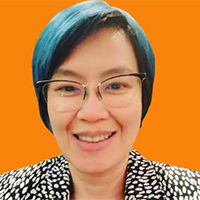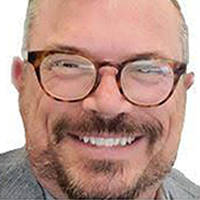19 July at 02:00PM
Celebrating PRIDE: Building Strong Customer Relationships and Building Pride within Organizations
PMI Toronto’s monthly Chapter meeting in June celebrated PRIDE with two engaging speakers. Hosted and organized through PMIT’s Diversity, Inclusion, and Equity (DEI) Committee, the night was moderated by the DEI Chairperson, Jane Heggie, who actively engaged the audience and speakers throughout the event. The Chapter meeting topic was Addressing the Needs of Customers Internally and Externally: A Celebrations of Pride in Project Management. The evening enriched concepts of customer success and educated attendees on how project managers can approach building an Employee Response Group (ERG) in their organizations.
Meet our Guest Speakers
The night’s speakers included Jo-Ann Chaim and Michael Kaneva.

Jo-Ann is the Vice President, Client Engagement of AudienceView, she is a member of PMI Toronto and an active mentor for the Chapter. She is active in Toastmasters and serves on the Board for Inside Out. She is also a member of the LGBTQ community and strongly believes that “wonderful things happen when high performing teams, customer success philosophies and PMI methodologies intersect.”

Michael Kaneva is the first ever Director of Equity, Diversity, and Inclusion (EDI) at OPTrust. He has dedicated his career to organizational culture and development. Michael has been building diverse and inclusive workplaces for over twenty years. As a member of the LGBTQ+ community and someone living with a disability, Michael has been dedicated to bringing meaningful and positive change into developing practical business solutions and addressing the issues of discrimination, racism, and unconscious biases.
Customer Success: Mapping the Customer Journey
Jo-Ann Chaim delivered an engaging presentation, Mapping the Customer Journey: Desired Outcomes, Time to Value and Defining Success, in her presentation she challenges organizations to build better relationships with their customers. Gaining customer retention will lead to successful outcomes for the customer and organization. Jo-Ann focused on three main areas of how to build better customer experiences.
1. Create a customer journey map—building understanding and achieving goals
The customer journey is the relationship between the customer and the organization. How as an organization/service can you create a great customer relationship that identifies the customers’ needs and expectations. Organizations are successful if their customers are loyal and satisfied with their services. By creating a customer journey map, organizations will understand the customer experience. The journey mapping exercise is a way to encourage people across the organization to deliver a customer experience that they would want themselves but also aiding them in understanding the customers’ needs. The map will aid in creating a solid customer experience.
Jo-Ann points out some valid guiding principles when mapping the customer journey. These include:
- Being honest
- Viewing the map through the customer’s point of view
- Building an “as-is” customer journey – what is the customer’s current experience, once identified, you will know how to build a better/improved experience
- Thinking about the entire customer journey (every stage counts)
- Validating your data with your customers will allow to improve any missing areas
As an example, Gartner’s customer journey framework explores the customer journey in the buy and own journey. It also explores the advocate journey between the customer and organization. Every aspect is considered to ensure a great experience.
2. Appreciate customer success—it is a winning strategy
This strategy for customer success is strongly connected to retaining customers as opposed to an emphasis on obtaining new customers. Your organization becomes successful by keeping your customers happy. Engaging customers and building strong relationships with them means that organizations must understand what the customer’s needs are and build ways to efficiently deliver.
3. Understand two key concepts: desired outcomes and time to first value
Desired Outcomes
When customers achieve their desired outcomes through the services provided by your organization that is customer success. There are two main goals in achieving desired outcomes. First it is required outcome. This is what the customer is trying to achieve. This is very important to the customer. Second, is appropriate experience. The experience is why customers do business with your organization, so how will the customer achieve this.
Time to First Value
How is value defined? In order to be successful with your customers organizations need to provide tangible successes for the customers. If customers don’t gain value in good time they will likely not stay loyal to your organization.
Do These Concepts Help Retain Customers Over Time
Jo-Ann Chiam has a project management background so the greatest part of bringing value to the customer is to “intersect customer success philosophies and project management rigour and methodologies.” Taking desired outcomes and time to first value concepts into projects and relationships with customer will deepen stronger customer and project success.
Fostering Pride All LGBTQ+ Employees
Michael presented, LGBTQ Employee Resource Groups: Building Pride from Within, which explains how organizational practices, systems, and ways of being will allow employees to be successful both personally and professionally. Michael says that as project managers we are “key change agents in this space.” The information he presents is both tactile and practical allowing PMs to infuse these concepts and practices into our own organizations.
Organizations need to start first with inclusion. When inclusive behaviours—listening skills and making people feel their opinions are valued—are promoted it welcomes diversity. Diversity is the state of having different people doing things differently and bringing new perspectives. In the last 5 to 6 years equity has become more prevalent. All work together to ensure continuous improvement.
Diversity, Inclusion and Equity is the Right Thing to Do: How PMs Can Initiate Change
Change is required and organizations are taking steps to effect change and be more inclusive. Even if your organization doesn’t include a committee, as project managers you can initiate these changes. Best practices come in the form of Employee Resource Groups (ERGs) which are voluntary, employee-led groups that unite members and allies to foster diverse and inclusive workplaces.
Using the methodologies of project management, Michael brilliantly breaks down how as PMs we can initiate change and build an ERG in your organization.
Conception
Creating an ERG means laying out the groundwork and doing research to find out what needs are being met, what work is required, what do employees want, who are your leadership sponsors, how many diverse people does the organization have, what best practices can be created to initiate positive change, and create a business strategy that is symbiotic between an ERG and business target.
Initialization & Planning
The project charter identifies the tangibles of what tools and resources are required to build a successful DEI group that is spearheaded by a supportive executive sponsor and board and led by an impactful and dedicated ERG chair.
Execute
Create a workback plan from the approved Charter, establish a governance structure, and include membership drive so that the ERG Chair is successful in establishing DEI change.
Monitor & Control
Once the pre-work is complete the ERG Chair can assign roles, everyone can identify needs and goals, which will achieve a level of comfort to sustain and improve the team.
A Timeline of LGBTQ+ in Canada
June is a time to celebrate Pride, give a voice to a community that had once been scared to express who they really were and for allies to show support for this community. As we work toward educating ourselves and others about DEI initiatives to further change, we must acknowledge the history of those that advocated for change and established some key foundational changes over the last 50 years.
|
1969 |
Canada decriminalizes homosexuality |
|
1971 |
First Gay Rights Protests in Canada |
|
1973 |
Gay Liberation/Pride week |
|
1977 |
Canada’s ‘Stonewall’ Montreal Gay Bar Police Raids, Quebec adds Sexual Orientation to their Human Rights Code, First Society for Queer Deaf people formed |
|
1978 |
Immigration Act no longer prohibits homosexuals |
|
1981 |
First Lesbian Pride March in Canada |
|
1982 |
First detection of HIV/AIDS in Canada as a ‘gay cancer’ |
|
1988 |
First openly gay member of Canadian parliament |
|
1990 |
Two Spirt (niizh manidoowag) is coined, WHO removes homosexuality from “disorder” list |
|
1992 |
Sexual Orientation “read into” Canada Human Rights Act Federal court lifts ban against gays and lesbians in the military |
|
1995 |
Sexual orientation included in Canadian Charter of Rights and Freedoms, Same-sex couples gain legal adoption rights in Ontario |
|
1996 |
Bill C-33: Sexual Orientation included in Canadian Human Rights Act |
|
2002 |
NWT includes Gender Identity in Human Rights Act |
|
2005 |
Bill C-38: Civil Marriage Act |
|
2016 |
Parliament raises Pride flag |
|
2017 |
Bill C-16: Canadian Human Rights Act expanded to Gender Identity & Expression |
Special thanks to PMI Toronto’s DEI Committee for bringing Jo-Ann Chaim and Michael Kaneva together and presenting to our community, celebrating PRIDE, and exploring new ways of initiating change.
Get Involved
Looking to get involved in PMI Toronto DEI initiatives? Support the PMI Toronto Steering Committee on Diversity and Inclusion. For inquiries please contact Roberta Jane Heggie.



